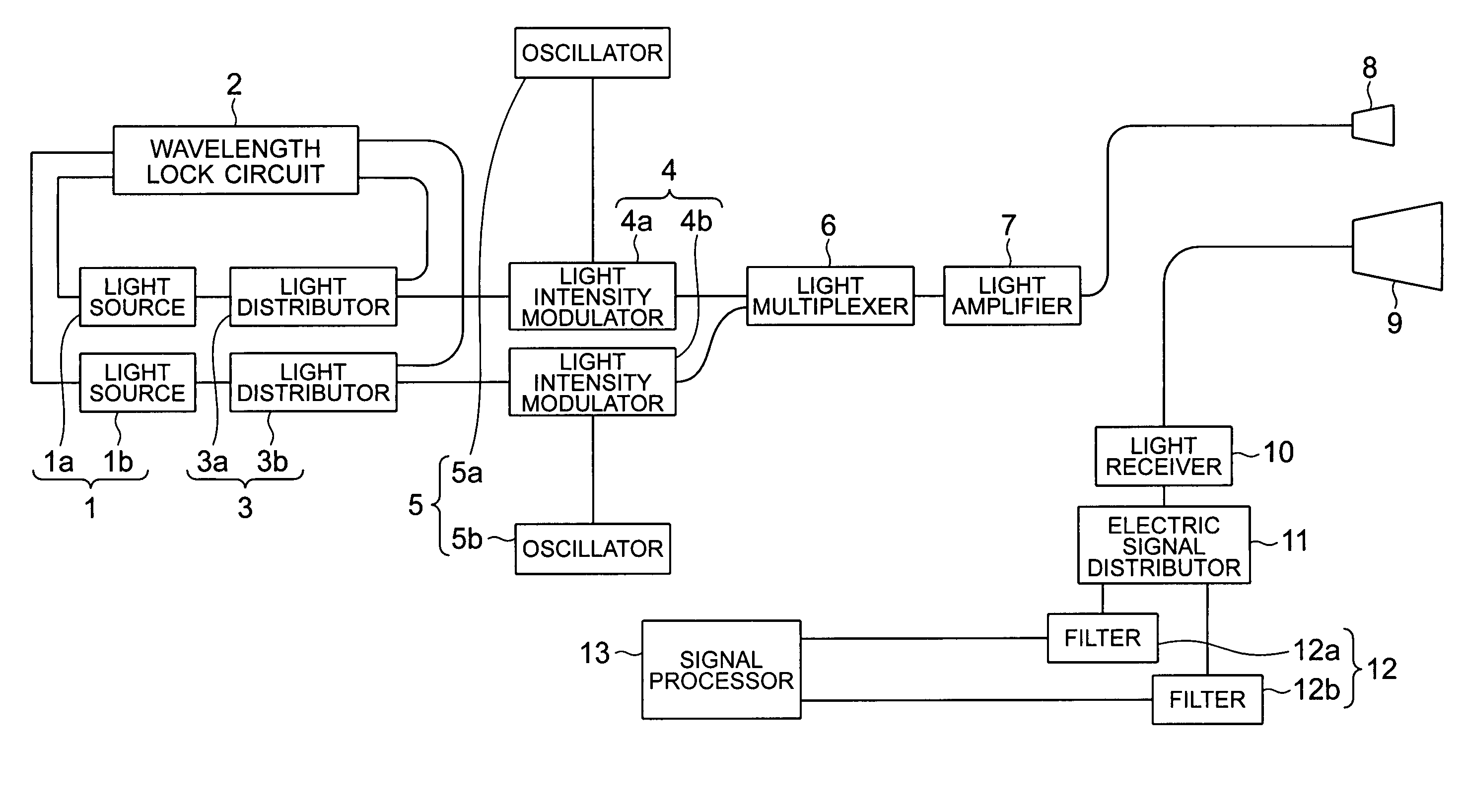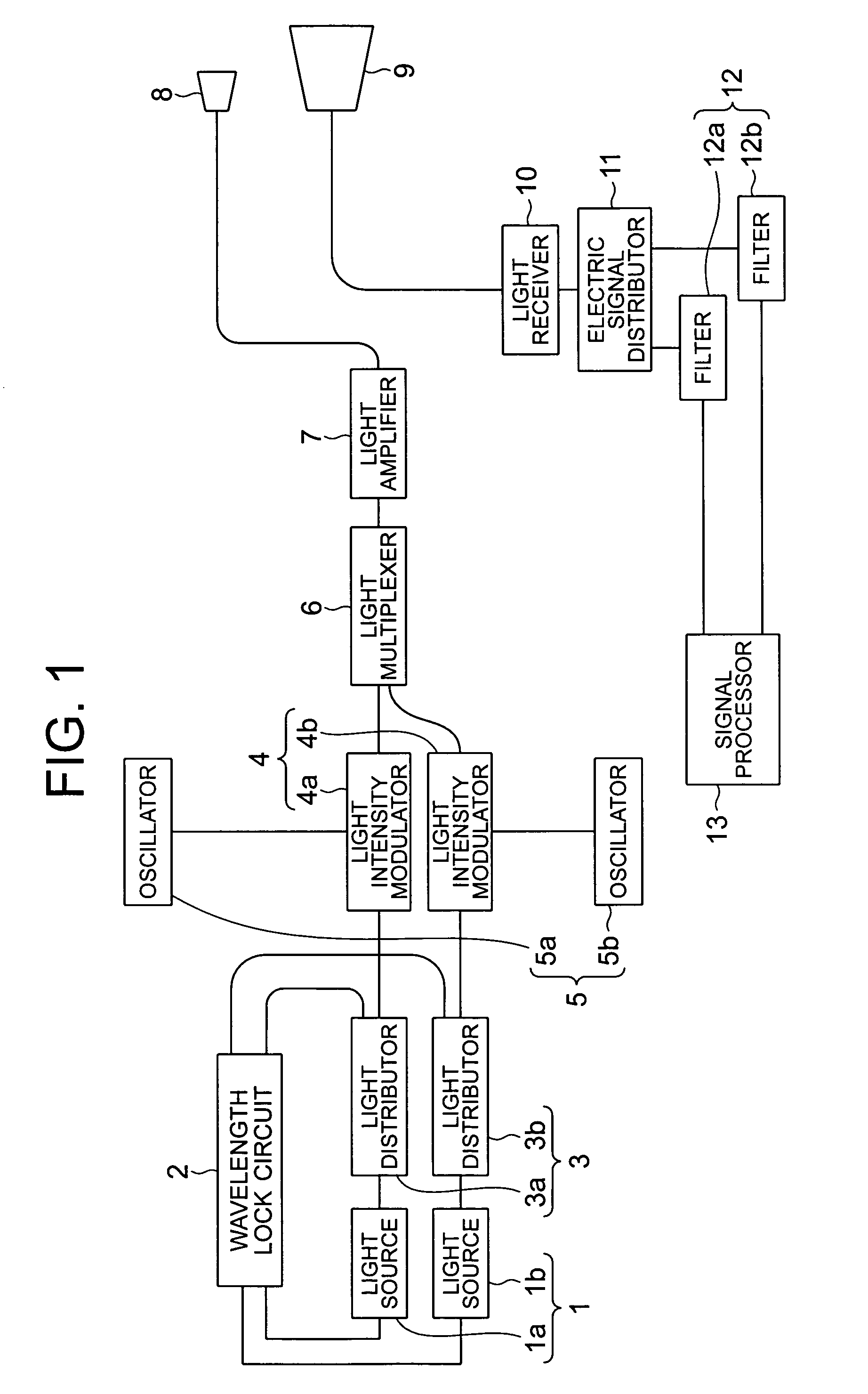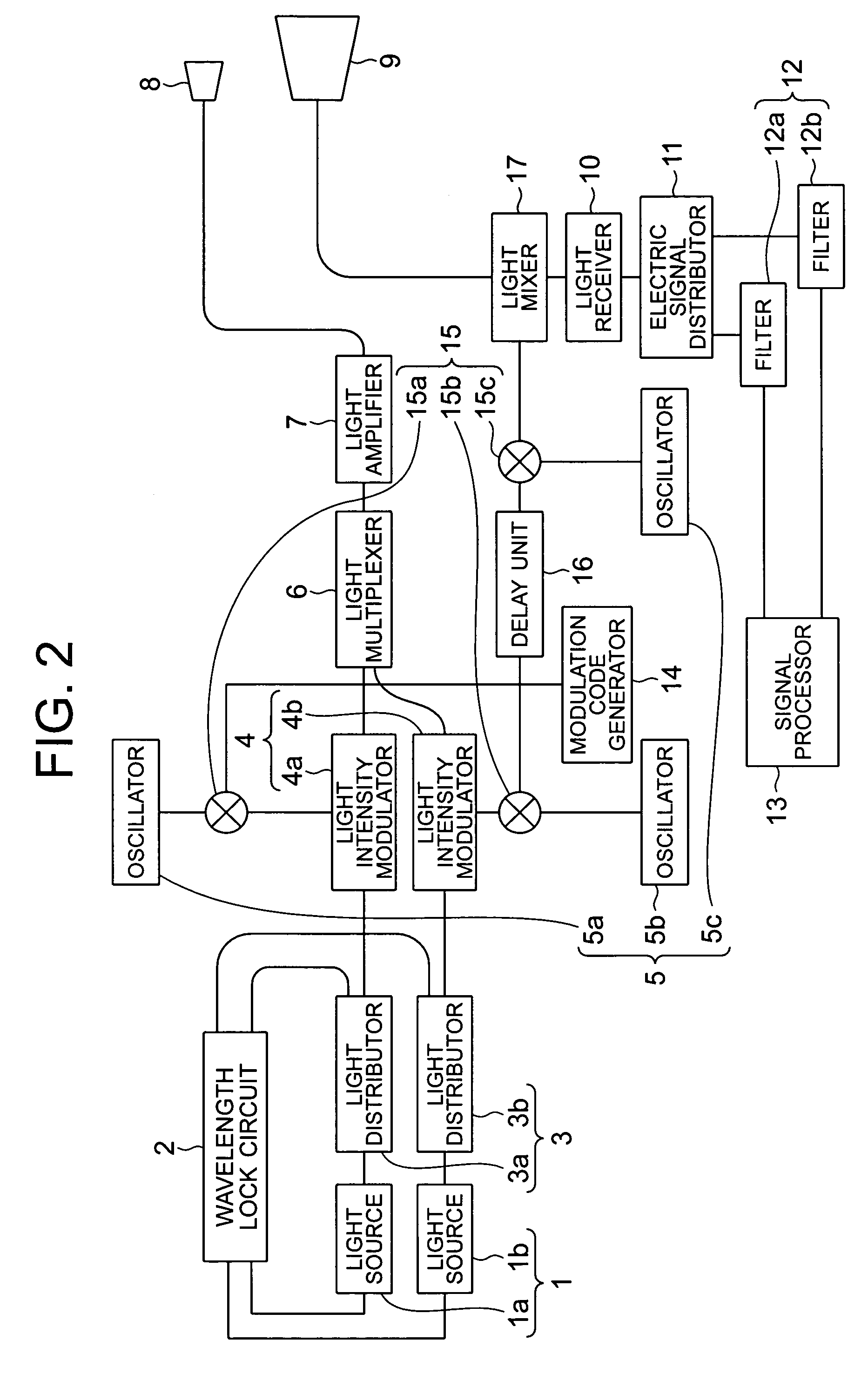Differential absorption lidar apparatus having multiplexed light signals with two wavelengths in a predetermined beam size and beam shape
a lidar apparatus and multiplexing technology, applied in the field ofdifferential absorption lidar apparatus, can solve the problems of high transmission power of laser light, difficult to allow laser light with such a small line width, and difficult to maintain the reliability of the apparatus, and achieve the effect of high reception s/n ratio and high precision
- Summary
- Abstract
- Description
- Claims
- Application Information
AI Technical Summary
Benefits of technology
Problems solved by technology
Method used
Image
Examples
embodiment 1
[0022]A differential absorption lidar apparatus according to Embodiment 1 of the present invention will be described with reference to FIG. 1. FIG. 1 is a block diagram showing a configuration of the differential absorption lidar apparatus according to Embodiment 1 of the present invention. Hereinafter, in each figure, like reference numerals denote like corresponding components.
[0023]In FIG. 1, the differential absorption lidar apparatus according to Embodiment 1 includes a light source 1 (1a and 1b), a wavelength lock circuit 2, a light distributor 3 (3a and 3b), a light intensity modulator 4 (4a and 4b), an oscillator 5 (5a and 5b), a light multiplexer 6, a light amplifier 7, a transmission optical system 8, a reception optical system 9, a light receiver 10, an electric signal distributor 11, a filter 12 (12a and 12b), and a signal processor 13.
[0024]The light source 1 (1a and 1b), the light distributor 3 (3a and 3b), and the wavelength lock circuit 2 constitute light signal gene...
embodiment 2
[0056]A differential absorption lidar apparatus according to Embodiment 2 of the present invention will be described with reference to FIGS. 2 and 3. FIG. 2 is a block diagram showing a configuration of the differential absorption lidar apparatus according to Embodiment 2 of the present invention.
[0057]In FIG. 2, the differential absorption lidar apparatus according to Embodiment 2 includes a modulation code generator 14, an electric mixer 15 (15a, 15b, and 15c), a delay unit 16, and a light mixer 17, in addition to the above-mentioned components of the differential absorption lidar apparatus in Embodiment 1.
[0058]Furthermore, although there are two oscillators 5 in Embodiment 1, there are three oscillators 5 (5a, 5b, and 5c) in Embodiment 2. The other components are the same as those shown in Embodiment 1.
[0059]The light source 1 (1a and 1b), the light distributor 3 (3a and 3b), and the wavelength lock circuit 2 constitute the light signal generation means. Furthermore, the oscilla...
PUM
| Property | Measurement | Unit |
|---|---|---|
| Doppler frequency shift | aaaaa | aaaaa |
| Doppler frequency shift | aaaaa | aaaaa |
| relative speed | aaaaa | aaaaa |
Abstract
Description
Claims
Application Information
 Login to View More
Login to View More - R&D
- Intellectual Property
- Life Sciences
- Materials
- Tech Scout
- Unparalleled Data Quality
- Higher Quality Content
- 60% Fewer Hallucinations
Browse by: Latest US Patents, China's latest patents, Technical Efficacy Thesaurus, Application Domain, Technology Topic, Popular Technical Reports.
© 2025 PatSnap. All rights reserved.Legal|Privacy policy|Modern Slavery Act Transparency Statement|Sitemap|About US| Contact US: help@patsnap.com



